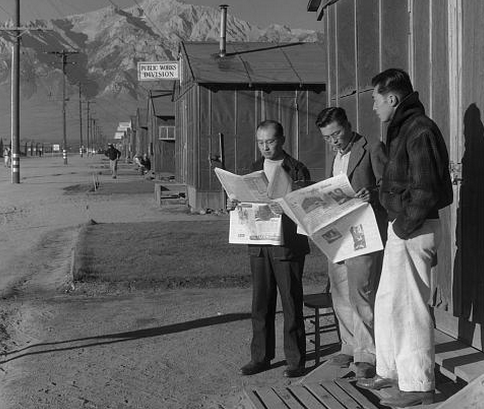
"Takei's activist pas­sion is informed not only by his sta­tus as a gay man, but also by his child­hood expe­ri­ences. At the age of 5, Takei was round­ed up with his Amer­i­can-born par­ents and tak­en to a Japan­ese intern­ment camp in Arkansas, where he would live for the next three years. In an inter­view with Democ­ra­cy Now, Takei spoke frankly about this his­to­ry:"
"We're Amer­i­cans.... We had noth­ing to do with the war. We sim­ply hap­pened to look like the peo­ple that bombed Pearl Har­bor. But with­out charges, with­out tri­al, with­out due process-the fun­damen­tal pil­lar of our jus­tice system-we were sum­mar­i­ly round­ed up, all Japan­ese Amer­i­cans on the West Coast, where we were pri­mar­i­ly res­i­dent, and sent off to 10 barb wire intern­ment camps-prison camps, real­ly, with sen­try tow­ers, machine guns point­ed at us-in some of the most des­o­late places in this coun­try."
George Takei transitioned from fame as Star Trek's Mr. Sulu to a widely followed social-media figure and civil-liberties advocate. His activism reflects both his identity as a gay man and his childhood experience of forced internment. At age five, Takei and his American-born parents were rounded up and sent to a Japanese-American internment camp in Arkansas, where they lived for three years. Takei and his family were among more than 100,000 Japanese-Americans, over half U.S. citizens, interned during World War II. Photographer Ansel Adams gained access to Manzanar and produced more than 200 photographs documenting life inside the camp.
Read at Open Culture
Unable to calculate read time
Collection
[
|
...
]